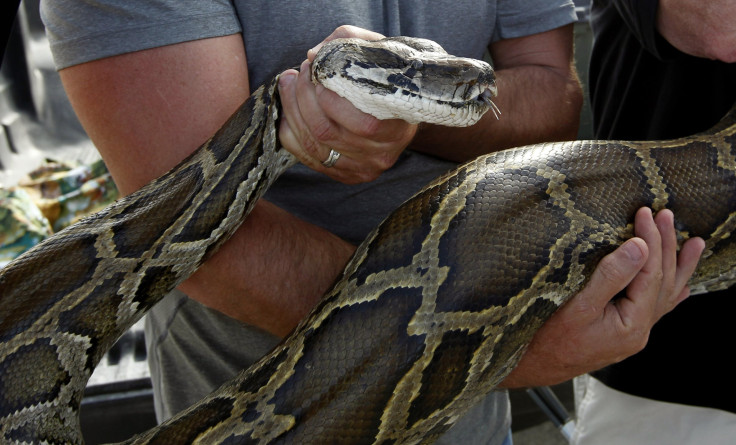Python vs. Woman: Police Capture Giant Snake Near Miami Beach

Miami Beach police captured a giant python from a sidewalk of one of the city's most popular tourist streets Wednesday afternoon. The Burmese python measured 6 feet long and was slithering down a store and a residential building at 1300 Lincoln Road, just two blocks from the west end of the popular pedestrian mall.
Suspect apprehended! Officers responded to a call of a 6ft snake just off Lincoln Road and safely captured it. #GoodWork pic.twitter.com/N5M2mq47T6
— Daniel J. Oates (@DanielJohnOates) August 30, 2017
Local media reported that the snake was spotted lying under a palm tree by people outside enjoying the late summer day.
"When I saw how huge it was, I freaked out. So did everybody else," Indika Wanigarathne, the owner of a cafe near where the python was found, told Miami Herald.
Miami Beach police were immediately informed about the snake as people around panicked.
"First a male officer came, and didn't want to get too close, so a second male officer came and said hell, no, he wasn't going to touch it," Wanigarathne said. "Then a lady officer came and she was a genius. She didn't panic. She put on gloves and picked up the python with her hands and put it in a little cooler. The guys gathered around were screaming but she was calm."
The cafe owner praised the police officer who caught the python: "You could call her a hero. Trust me, I wouldn’t grab that thing."
It was unclear where the snake came from, a Miami Beach Police Department representative said.
Burmese pythons' population has increased in Florida and in 2015 scientists said that they are spiraling out of control. The pythons are native to Asia and were first spotted in the U.S. in the late 1970s.
A study published in April 2015 in the journal Animal Biotelemetry spoke about the Burmese pythons' behavior and range in Florida after pulling together five years of tracking data to pinpoint where the pythons might reside. Researchers claimed that the pythons tend to cluster around coastal areas and sloughs, or swamps, and almost always prefer areas with dense tree coverage.
"These high-use areas may be optimal locations for control efforts and further studies on the snakes' potential impacts on native wildlife," Kristen Hart, a United States Geological Survey research ecologist and lead author of the study, said in a statement. In recent years, several hunters from all over the country have flocked to Florida to take part in state-sanctioned python hunts. "Understanding habitat-use patterns of invasive species can aid resource managers in designing appropriately timed and scaled management strategies to help control their spread,” Hart said.
On Wednesday, Miami Herald reported that efforts have been made in the state to control the population with officials hiring snake trackers from the Irula tribe in India, who hunted down 33 snakes in a month. Recently, a 16-foot, 10-inch python was killed by an orchid grower.
© Copyright IBTimes 2024. All rights reserved.





















